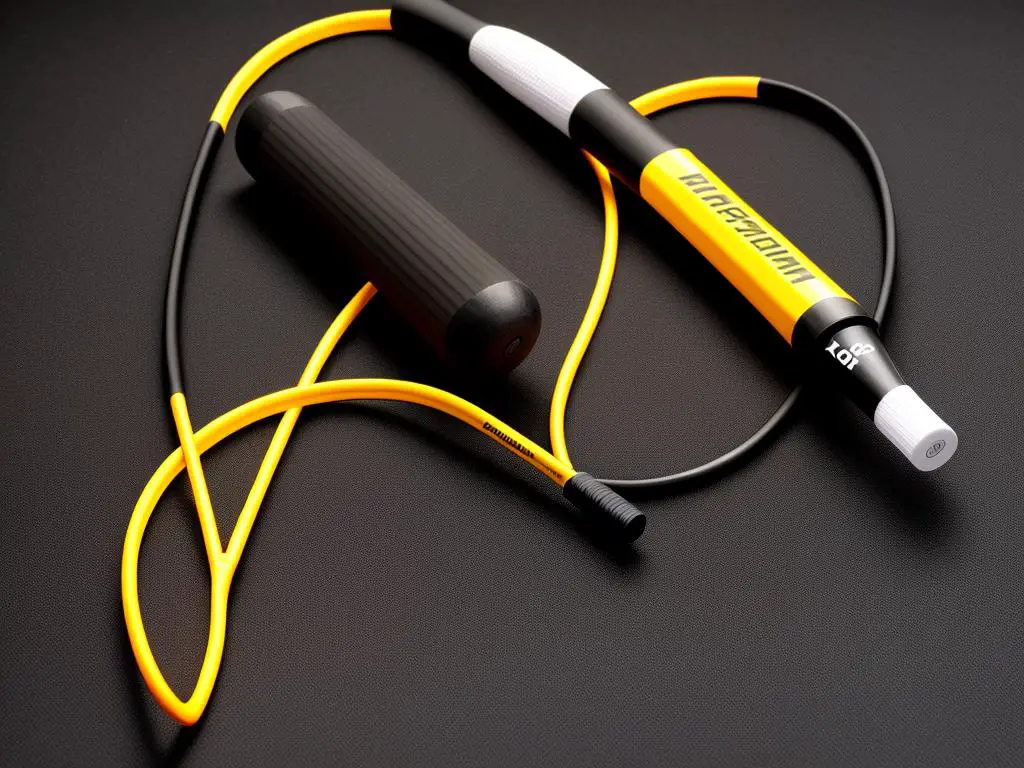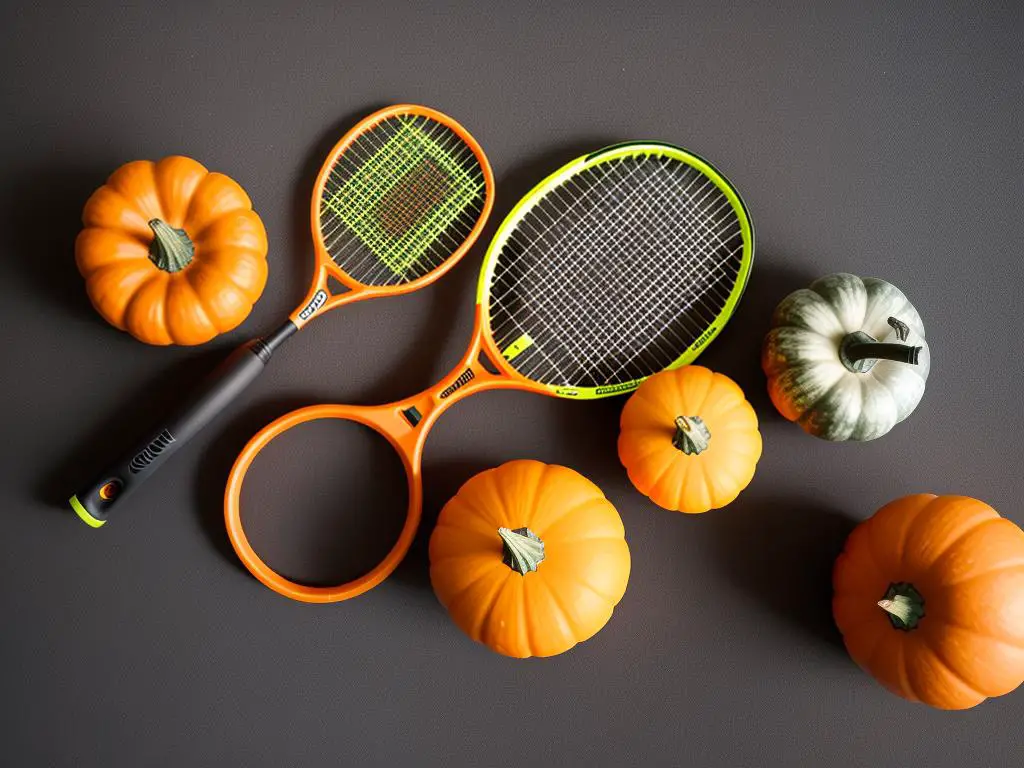Welcome to the fantastic cross-court world of squash! As a first-time player, one of your major determining factors for success and progress on the court lies in the choice of your racket. Understanding the functionalities of the different components of a squash racket, such as the grip, strings, head, and shaft, sets you on the path to making an informed purchase. Cracking the code in selecting a perfect racket tailored to your novice skills hinges on factors like weight, size, and balance. This ensures not just your comfortability, but optimal maneuverability during gameplay. Moreover, durability combined with affordability is often a primary concern for beginners. With various options available on the market, choosing a durable racket can seem daunting hence the need for a comprehensive review. This article aims to enlighten you on these points and guide you towards making informed decisions on your squash racket choice.
Understanding squash rackets
Understanding Squash Rackets: Materials and Construction
Squash rackets, like other sporting equipment, are composed of several primary components namely: the grip, strings, head, and shaft. Each of these components play a significant role in a player’s performance in a game and determine the durability and longevity of the rackets.
The grip of the racket has the direct task of providing comfort and control to the player. The material chosen for the grip could vary, but it is typically made from a durable and sweat-absorbing material such as leather or synthetic composites. This allows the player to firmly hold and swing the racket without slipping away.
The strings of squash rackets are tensioned in the head and influence how the ball bounces off when hit. Higher tension generally provides more control and accuracy, but lower tension can offer more power. Strings are usually made from nylon but more expensive squash rackets may come equipped with natural gut or multifilament strings, which can provide better feel and power.
The head of the racket is the part that comes into direct contact with the squash ball. It is of utmost importance in determining the performance and durability of the racket. The head can be made from a variety of materials including aluminum, titanium, and carbon, with the latter two being more durable and stiff, thereby providing more power and control.
Finally, the shaft of the racket connects the grip to the head and contributes to the overall balance and swing weight of the squash racket. It’s also constructed from lightweight and durable materials like carbon fiber or graphite.
How to Choose a Durable Squash Racket as a Novice Player
Beginning a journey into the sport of squash involves seeking a racket that gives you both durability and a boost in performance. As a beginner, your racket might contact the court walls or floors due to imperfect strokes. Therefore, choosing a robust, long-lasting squash racket that can endure such impacts is indeed vital.
Beginners will benefit from a larger, heavier racket with an ample head size, ensuring enhanced durability. Rackets constructed with aluminum frames offer improved durability and resistance to cracks or breakage due to unintended impacts, even though they may weigh a bit more than others.
Look out for sturdy, resilient strings on a racket. They’re going to bear a lot of tension, particularly during hard hits. Synthetic strings can be a suitable choice, given their toughness and lasting capability.
The grip on your racket should ideally be swappable as this is the part that suffers from wear and tear the most. This gives you the flexibility to just change the grip instead of the entire racket when it shows signs of wear, turning into a cost-saving option over time.
Getting a good grasp of the role and significance of each part of your squash racket can guide you better while picking a durable one. It will help not only in enhancing your gameplay but also in providing a long-lasting equipment that’s well worth the investment.

Choosing a racket for first-timers
An Introductory Look at Understanding Squash Rackets
Over time, squash rackets have seen significant evolutions, from erstwhile wooden designs to today’s modern composite structures composed of materials like carbon fiber or graphite. This evolution, combined with the dynamic changes in how the sport is played, has led to a variety of rackets featuring different qualities and attributes effectively impacting the game style. As a beginner, it’s crucial that you become familiar with these characteristics as they will guide you towards picking a durable squash racket that is perfectly tuned to your novice level skills.
Weight Matters in Squash Rackets
One of the key factors to consider while selecting a squash racket as a beginner is its weight. The weight of the racket plays an enormous role in influencing maneuverability and control during gameplay. Lightweight rackets, typically ranging between 110g to 140g, offers more control and are easier to handle, particularly for first-timers. They allow for quick reflexes and enable swift changes in direction which are critical aspects of squash. While heavier rackets offer more power, they can lead to early fatigue and are less forgiving on mishits. Thus, beginners are generally advised to lean towards lighter rackets as they enhance learning and improves overall gameplay.
Getting a Handle on Balance
After the weight, the balance of the squash racket is the next crucial factor. Rackets can be head-heavy, evenly balanced, or head-light. Head-heavy rackets provide more power and stability at the cost of maneuverability, which makes them less suitable for beginners. Head-light rackets, on the other hand, are easier to maneuver and provide better control, making them ideal for beginners. An evenly balanced racket offers a mixture of control and power, providing a balance between the two extremes. As a beginner, it’s advisable to start with an evenly balanced or a head-light racket to gain better control during serves and returns.
Size Does Count: Racket Head Size
The size of the racket head can also impact how one plays the game. A larger head size provides a larger hitting area or ‘sweet spot’, which is forgiving for beginners who are still learning to aim properly. However, larger head sizes can be heavier and less aerodynamic, making them harder to maneuver. Small head sizes offer more control and are lighter but need precision to hit with. As a beginner, a racket with a larger head size would be more beneficial as it accommodates less precise hits.
Testing Before Purchase
Apart from the tangible characteristics mentioned above, it’s essential to understand your playing style and physical capabilities. The best way to ensure you are comfortable with a squash racket is by testing it out before purchase. This allows for a first-hand experience of the racket’s weight, balance, and overall feel.
Consider borrowing different rackets from friends or rent from local sports clubs and test them in a practice game. Pay close attention to how the racket feels in your hand, its maneuverability, and its weight distribution. This can greatly help in choosing a racket that you’re comfortable with and enhance your overall gameplay.
Starting your squash journey doesn’t necessarily mean you need top-tier, expensive equipment. A lack of skill or physical fitness can’t be compensated with high-end gear. Your best bet as a beginner is to begin with a robust, user-friendly squash racket. As you gradually develop your skills and get a better understanding of your playing style, you can then commit to more advanced, specialized equipment.

Reviewing durable squash rackets
An Introduction: Sturdy Squash Rackets for Novice Players
Squash is an exhilarating, swift-moving sport that demands agility, strategic thought, and, of course, a trusty squash racket. For novice players, it is recommended to start with a resilient squash racket, built to weather intense and frequent gameplay as you refine your chops. The following is a list of reputable squash rackets designed for beginners, complete with their unique features, advantages, and drawbacks, price range, and where they can be acquired.
1. HEAD MicroGel 145 Squash Racket
This racket is a beginner-friendly option with MicroGel technology unique to HEAD, providing excellent response and feel. It features a balanced weight distribution for easy handling and is reasonably priced, falling under a $100 price range. However, beginners may find this racket slightly heavier.
You can purchase the HEAD MicroGel 145 Squash Racket through major online retailers like Amazon and sporting goods stores like Dick’s Sporting Goods.
2. Dunlop Beginner Squash Racquet Set
The Dunlop Beginner Squash Racquet Set is a perfect starter pack for first-timers. It comes with two durable rackets, making it a great choice for practice sessions with a partner. These rackets boast a lightweight frame for easy control but may not be as responsive for advanced hits like volleys and drop shots. The set can be found under the $60 price range.
The set is readily available on Amazon and select sporting goods stores.
3. Prince Pro Airstick Lite 550 Squash Racket
The Prince Pro Airstick Lite 550 Squash Racket offers a blend of power and control. Also, it has a larger head size which increases the sweet spot, making it easier for beginners to hit the ball. The racket is on the higher end of the price spectrum, often costing around $100. Some first-timers may find the lightweight nature of the racket challenging to control initially.
The Prince Pro Airstick Lite 550 Squash Racket can be bought on major online platforms like eBay and in-store at sporting goods chains.
4. Tecnifibre Carboflex Squash Racquet Series
Tecnifibre Carboflex Squash Racquet Series offers excellent power and durability. This racket also embraces the combination of carbon and fiber, contributing to maximum shock absorption ideal for beginners. This series can be a bit expensive, with rackets typically priced around $120-$160. Some initial users could find it hard to control due to its stiff structure.
You can find the Tecnifibre Carboflex Squash Racquet Series on Amazon and specialty squash equipment retailers.
By considering these rackets, beginners can make an informed decision and select the tool that best suits their playing style, proficiency level, and budget. While the initial investment might feel steep for some options, the durability and performance of these rackets make them worthy prospects for any novice squash enthusiast.

Choosing the correct squash racket is a critical step in enhancing your performance and enjoyment of the game. As a beginner, you have a unique set of needs and a durable racket that matches your skill level can affect your gameplay massively. Factors such as weight, balance, and size, must be well understood and carefully considered before any purchase. Hence, arming yourself with the knowledge presented in this article will navigate you towards a well-informed buying decision. On your journey towards professionalism in squash, remember that the art lies not only in the racket but in the determination, persistence, and patience of the player. Now, with the understanding and careful assessment, you’re ready to make that important first step – finding your perfect game partner in your ideal squash racket. Happy Squashing!